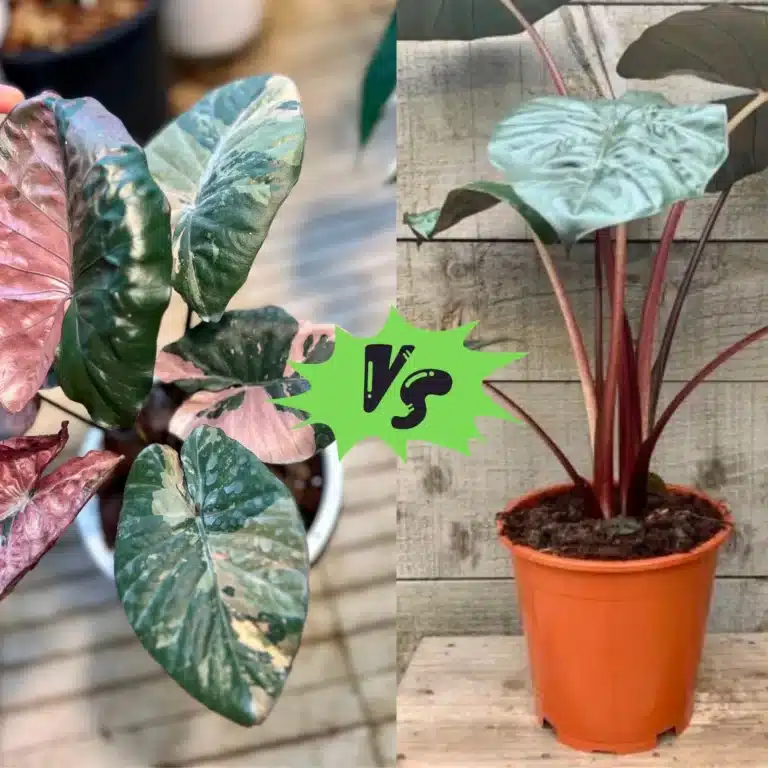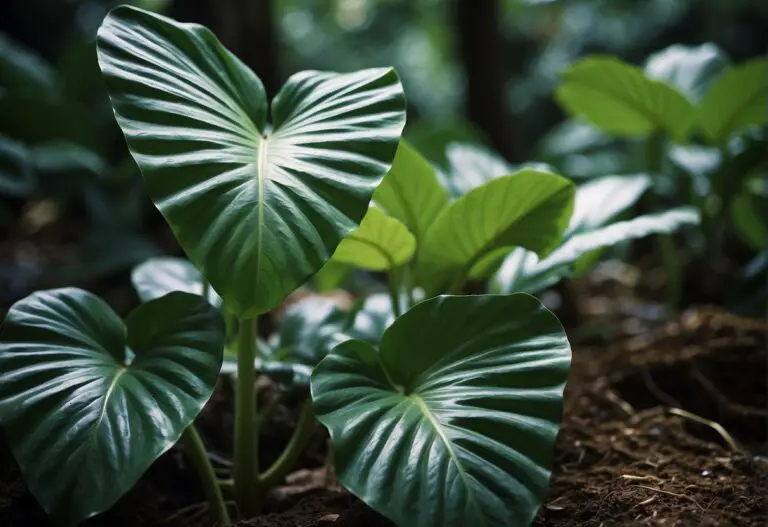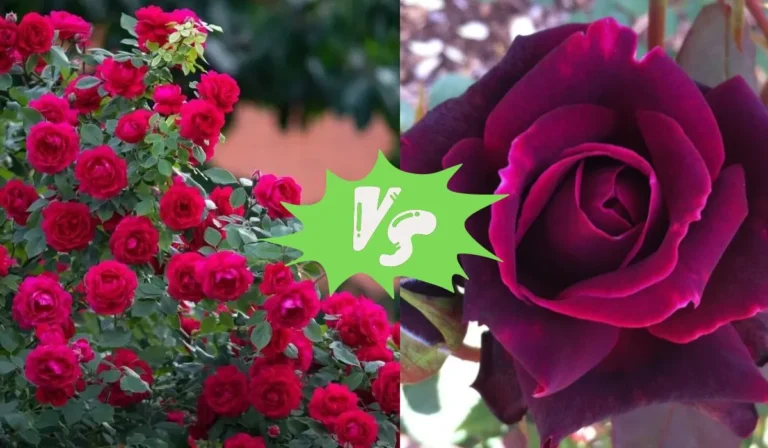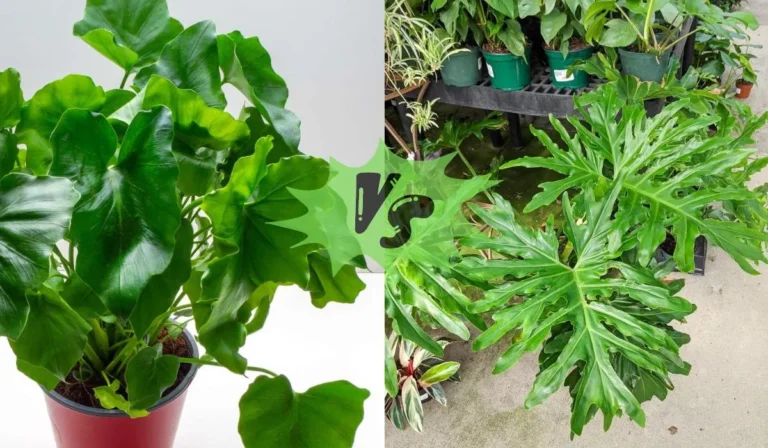Philodendron Pastazanum vs Plowmanii: A Comparative Analysis
If you’re a plant enthusiast looking to expand your collection, you might be considering adding a philodendron to your indoor garden.
Two popular choices are Philodendron pastazanum and Philodendron plowmanii. While these plants share some similarities, they also have distinct differences that make them unique.

Philodendron pastazanum and Philodendron plowmanii are both members of the Araceae family, which includes other popular houseplants like the Monstera deliciosa and the ZZ plant. The two plants also share similar care requirements, such as bright, indirect light and moist soil. However, when it comes to morphology, there are some key differences to note.
Key Takeaways
- Philodendron pastazanum and Philodendron plowmanii are both popular choices for indoor gardening.
- While they share some similarities, the two plants have distinct differences in morphology.
- Understanding these differences can help you choose the right plant for your indoor garden.
Taxonomy and Classification

Genus Philodendron
Philodendron is a genus of flowering plants in the family Araceae. It is one of the two most abundant genera in its family, with over 400 different species.
The name “Philodendron” comes from the Greek words “philo” meaning love, and “dendron” meaning tree. This refers to the fact that many Philodendron species are epiphytic, meaning they grow on other trees for support.
Species Overview
Philodendron pastazanum and Philodendron plowmanii are two species of Philodendron that are often compared. Both species have large heart-shaped leaves, but they have unique distinctions. Pastazanum has velvety green matte leaves with paler midribs, while Plowmanii has a more dark green look with dark green midribs.
Philodendron pastazanum is native to Ecuador and Peru and is a relatively new species, discovered in 2007. It is a rare and highly sought-after plant due to its unique appearance.
Philodendron plowmanii, on the other hand, is native to Colombia and is a more common houseplant. It is often grown for its striking foliage and ease of care.
Morphological Differences

If you’re trying to differentiate between Philodendron Pastazanum and Plowmanii, there are a few key morphological differences to look for.
Leaf Shape and Texture
One of the most noticeable differences between these two plants is the leaf shape and texture. Philodendron Pastazanum has velvety, matte green leaves with paler midribs, while Plowmanii has a more dark green look with dark green midribs.
The leaves of Pastazanum are heart-shaped and grow up to 2 feet long, while Plowmanii leaves are also heart-shaped but typically smaller in size.
Growth Patterns
Another difference between these two plants is their growth patterns. Philodendron Pastazanum is a crawling plant that grows on the ground, while Plowmanii is a climbing plant that can grow up to 6 feet tall with support.
Additionally, Plowmanii has a more upright growth habit and tends to produce larger leaves at the top of the plant.
Cultural Significance
Historical Use
Philodendron pastazanum and plowmanii are not only popular ornamental plants but also have cultural significance. The indigenous people of South America have been using philodendrons for centuries for medicinal and spiritual purposes.
They believe that the plants have healing properties and can ward off evil spirits. In addition, philodendrons were used to make dyes for textiles and baskets.
Modern Ornamental Value
Today, philodendrons are widely cultivated as ornamental plants. They are popular for their attractive foliage and easy-to-care-for nature. Philodendron pastazanum and plowmanii, in particular, are highly sought after by plant enthusiasts for their large, heart-shaped leaves and velvety texture. They can be grown as indoor or outdoor plants and can thrive in a wide range of conditions.
Philodendrons are also popular for their air-purifying properties. They can remove toxins such as formaldehyde, benzene, and trichloroethylene from the air, making them an excellent choice for improving indoor air quality.
In summary, philodendrons have a rich cultural history and continue to be highly valued for their ornamental and air-purifying properties.
Habitat and Ecology
Natural Habitat
Philodendron pastazanum and plowmanii are native to the tropical rainforests of South America, specifically Peru and Ecuador. They grow in the understory of the forest, where they receive filtered light and moderate humidity.
These plants are epiphytes, meaning they grow on other plants for support, but they are not parasitic. They have aerial roots that absorb moisture and nutrients from the air and rain.
Ecological Role
Both Philodendron pastazanum and plowmanii play an important ecological role in their natural habitat. As epiphytes, they provide habitat and food for a variety of animals, including insects, birds, and small mammals. Their leaves and stems are covered in a waxy coating that helps to repel water and protect them from damage caused by heavy rainfall.
In addition, these plants are important in the carbon cycle. They absorb carbon dioxide from the air and store it in their leaves and stems. When they die and decompose, the carbon is released back into the atmosphere. This helps to regulate the amount of carbon dioxide in the air and mitigate the effects of climate change.
Overall, Philodendron pastazanum and plowmanii are fascinating plants that play an important role in the ecology of their natural habitat. They are adapted to life in the rainforest understory and have unique features that allow them to thrive in this challenging environment.
Propagation and Cultivation
Propagation Techniques
To propagate Philodendron pastazanum and plowmanii, you can use stem cuttings, tip cuttings, or seeds. Stem cuttings are the most common and easiest method.
Choose a healthy stem with at least one node and cut it just below the node. Remove any leaves from the bottom of the stem and place it in a pot filled with well-draining soil. Keep the soil moist and warm, and in a few weeks, you should see new growth.
Tip cuttings are similar to stem cuttings, but they are taken from the tip of the stem. This method is best used when the plant is growing vigorously. Seeds are the least common method of propagation. They require more time and effort, but they can be rewarding.
Cultivation Requirements
Philodendron pastazanum and plowmanii are both tropical plants that require warm, humid environments. They prefer bright, indirect light and well-draining soil. Water the plants regularly, but be careful not to overwater them. Allow the soil to dry out slightly between waterings.
Fertilize the plants every two to three months during the growing season. Use a balanced fertilizer, and follow the instructions on the package. Prune the plants as needed to maintain their shape and size.
Common Issues and Solutions
Pest Management
Philodendrons are prone to pests, so it’s essential to keep an eye out for any signs of infestation. Common pests include spider mites, mealybugs, and scale insects. To prevent these pests, keep your plant clean and dust-free.
If you notice any pests, isolate the plant and treat it with an insecticidal soap or neem oil. Be sure to follow the instructions carefully and repeat the treatment as necessary.
Disease Prevention
Philodendrons are also susceptible to diseases such as root rot and leaf spot. To prevent root rot, make sure your plant is not sitting in water and that the soil is well-draining.
If you notice any signs of leaf spot, such as yellow or brown spots on the leaves, remove the affected leaves and make sure the plant is not overwatered. You can also use a fungicide to treat the plant, but be sure to follow the instructions carefully.
Remember to keep your Philodendron Pastazanum or Plowmanii healthy by providing it with the appropriate amount of light, water, and nutrients. By taking proper care of your plant and being vigilant for any signs of pests or diseases, you can enjoy a beautiful and thriving plant for years to come.
Frequently Asked Questions
What are the growth habits of Philodendron pastazanum and Philodendron plowmanii?
Philodendron pastazanum and Philodendron plowmanii are both tropical plants that prefer warm and humid conditions. They grow best in well-draining soil and require regular watering to keep the soil moist but not waterlogged.
Philodendron pastazanum has velvety green matte leaves with paler midribs, while Philodendron plowmanii has a more dark green look with dark green midribs.
How does Philodendron pastazanum differ from Philodendron gloriosum in appearance?
Philodendron pastazanum and Philodendron gloriosum are both heart-shaped plants, but Philodendron pastazanum has a more elongated shape and is typically larger than Philodendron gloriosum.
Philodendron pastazanum also has white longitudinal stripes on its petioles, while Philodendron gloriosum does not.
Can Philodendron plowmanii be identified by a unique characteristic like a “Black face”?
No, Philodendron plowmanii cannot be identified by a unique characteristic like a “Black face”. This is a common misconception and is not a reliable way to identify the plant.
What are the similarities between Philodendron pastazanum and Philodendron mamei?
Philodendron pastazanum and Philodendron mamei are both tropical plants that prefer warm and humid conditions.
They have similar growth habits and require similar care. However, Philodendron mamei has silvery coloring on its leaves, while Philodendron pastazanum does not.
How rare is Philodendron pastazanum compared to other Philodendron species?
Philodendron pastazanum is considered a rare plant and is highly sought after by collectors. It is not as common as other Philodendron species like Philodendron hederaceum or Philodendron scandens.
Are there any notable differences in the care requirements between Philodendron pastazanum and Philodendron plowmanii?
The care requirements for Philodendron pastazanum and Philodendron plowmanii are very similar. Both plants prefer warm and humid conditions and require regular watering to keep the soil moist but not waterlogged.
However, Philodendron pastazanum may require slightly more attention as it is considered a rare plant and may be more sensitive to changes in its environment.
Related Posts:






